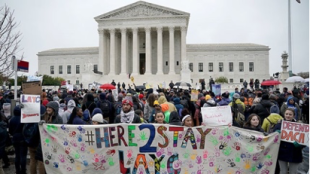Setting the Course for the Supreme Court: What to Do About the Court’s Politicization
(Source) Justice Ruth Bader Ginsburg, a liberal icon, died on September 18, 2020, and the Supreme Court holds the national spotlight as Trump and the Senate prepare to appoint conservative Amy Coney Barrett to the Court. The public reacted immediately and intensely to Republicans’ decision to push a nominee through the Senate weeks before the election. Some lambasted Trump’s decision as “cynical and insulting to the millions of women who view the late Supreme Court justice as a feminist icon,” while some praised the decision as a “powerful, positive statement.” Much of this rhetoric around the current nomination process reveals, and exacerbates, intense partisan conflict. So, how did we arrive at such a polarized and politicized nomination process for the Supreme Court? Perhaps the Supreme Court never was the independent and high-minded institution we have imagined it was in the past. Rachel Shelden, a history professor at Penn State, points out that “[n]ineteeth-century Americans. . . understood that the Supreme Court would be [partisan],” and that “partisan fidelity — not legal ability — was the primary consideration in presidents’ Supreme Court appointments.” For instance, when John Adams lost to Thomas Jefferson in the 1800 presidential election, he politicized the court [read more]

